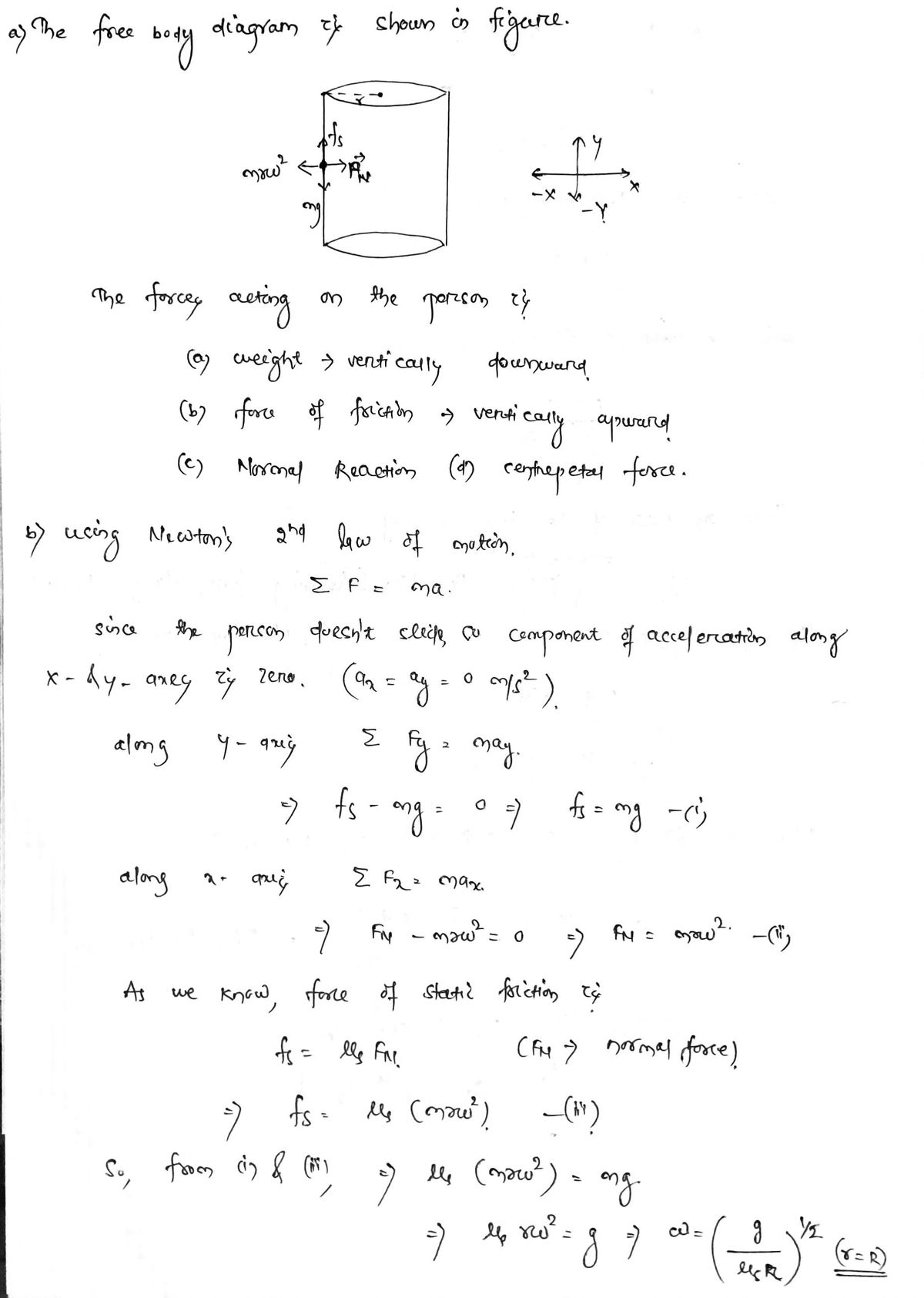a) Draw a FBD of you. b) Determine the minimum radial acceleration such that you don't slide when the floor is gone. Fal c) Determine the minimum tangential speed such that you don't slide when the floor is gone. d) Determine the period of time for you to go around once. e) Determine all these values if R = 10.0 m, 4, = 0.25.
a) Draw a FBD of you. b) Determine the minimum radial acceleration such that you don't slide when the floor is gone. Fal c) Determine the minimum tangential speed such that you don't slide when the floor is gone. d) Determine the period of time for you to go around once. e) Determine all these values if R = 10.0 m, 4, = 0.25.
Related questions
Question

Transcribed Image Text:**Circular Motion, Vertical Surface, with Static Friction:**
At an amusement park, you are on a ride which spins in a horizontal circle of radius \( R \). Your back is to a vertical wall on the inside of the circle. The coefficient of static friction between you and the wall is \( \mu_s \). At a certain speed, the floor drops away, but you don’t slide downward against the wall—you stay at "rest" relative to the wall. (Search “Rotor carnival ride” on YouTube to see an example.)
a) Draw a Free Body Diagram (FBD) of you.
b) Determine the minimum radial acceleration such that you don’t slide when the floor is gone.
c) Determine the minimum tangential speed such that you don’t slide when the floor is gone.
d) Determine the period of time for you to go around once.
e) Determine all these values if \( R = 10.0 \, \text{m}, \, \mu_s = 0.25 \).
**Diagram Explanation:**
The diagram depicts a cylindrical ride viewed from the side. It shows a person standing against the interior wall of the cylinder. The person is labeled "You," and the floor is marked as "No Floor" to indicate it has dropped away. The radius of the cylinder is labeled \( R \), and the direction of rotation is indicated by an arrow pointing around the central axis of the cylinder.
Expert Solution
Step 1

Step by step
Solved in 2 steps with 2 images
